Continuous Integration Solutions Market Size
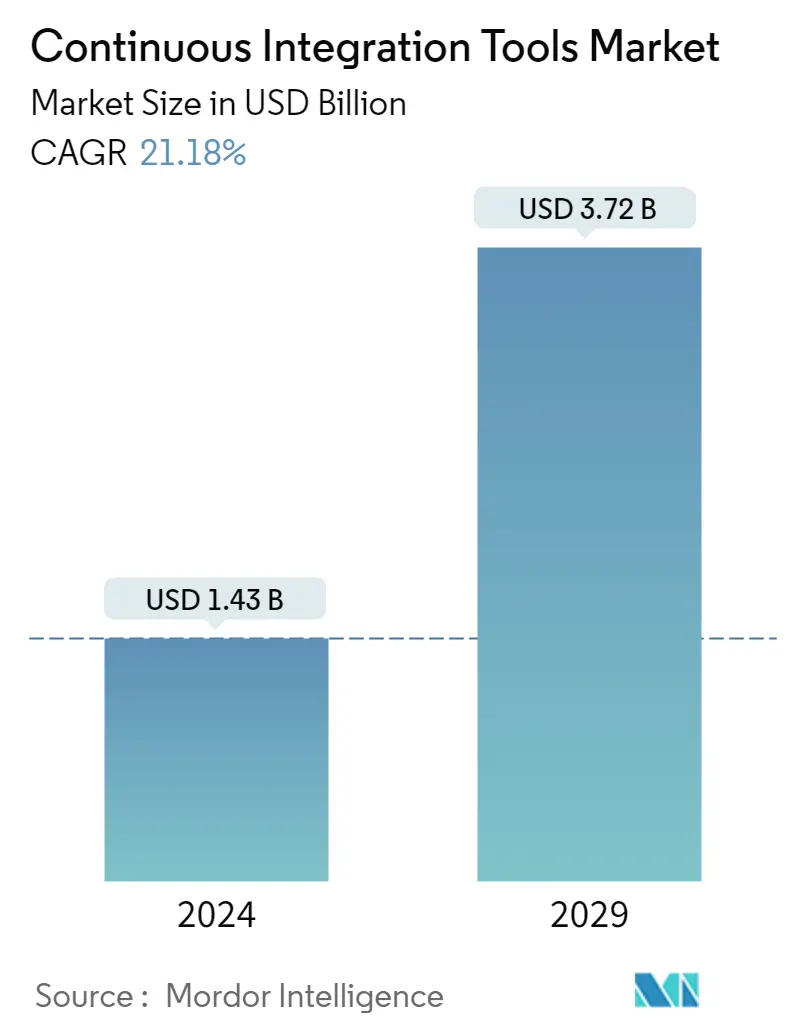
| Study Period | 2021 - 2029 |
| Market Size (2024) | USD 1.43 Billion |
| Market Size (2029) | USD 3.72 Billion |
| CAGR (2024 - 2029) | 21.18 % |
| Fastest Growing Market | Asia Pacific |
| Largest Market | North America |
Major Players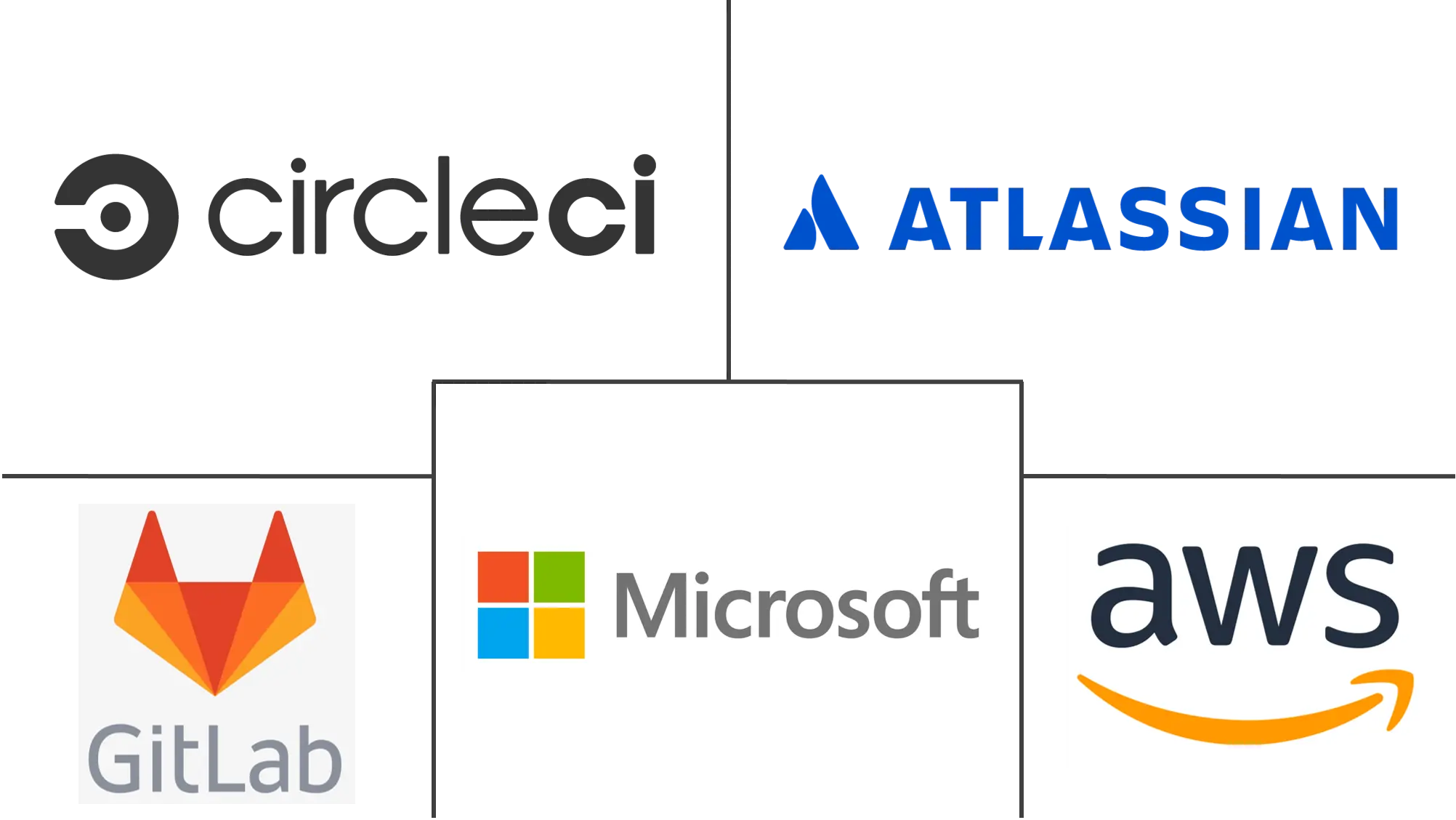
*Disclaimer: Major Players sorted in no particular order |
Continuous Integration Solutions Market Analysis
The Continuous Integration Tools Market size is estimated at USD 1.43 billion in 2024, and is expected to reach USD 3.72 billion by 2029, growing at a CAGR of 21.18% during the forecast period (2024-2029).
Continuous integration is a DevOps method for making software in which developers regularly merge their code changes into a shared repository. After that, automated builds and tests are run on the code.
- Continuous integration (CI) helps developers provide immediate reporting whenever any defect is identified in the code, so immediate corrective action is taken. It is an essential part of DevOps that integrates numerous DevOps stages. The testing phase is also automated and is instantly reported to the user.
- In continuous integration, the software is built and tested immediately after the code commit. In a larger project with many developers, commits are made at various times during the day. With each commit, code is built and tested. If the test case is passed, the build is tested for deployment. If the deployment is a success, the code is pushed to production. This commit, build, test, and deploy is a continuous process, hence the name "continuous integration."
- Various CI tools are available on the market, offering access to unique features. These have open-source and paid versions, and depending on the user's needs, the most preferred can be selected.
- Although all the CI tools are designed to perform the same basic functions, choosing the best CI tool becomes vital in the long run. Multiple tools may also be chosen to meet different needs, depending on things like features, how easy they are to use, and cost, among other things.
- According to a survey by JetBrains (a software company), 43% of software developers will employ continuous integration tools in 2021. Because CI tools are useful, the market is expected to grow positively over the next few years.
Due to the COVID-19 pandemic, several businesses had employees working from home, and the need to adopt CI tools for developers increased substantially. Companies increasingly moved their apps to the cloud or cloud-based platforms. Such incidents necessitated the use of CI tools in a timely manner.
Continuous Integration Solutions Market Trends
This section covers the major market trends shaping the Continuous Integration Tools Market according to our research experts:
Retail and E-commerce Industry Expected to Exhibit Significant Growth
- Digital transformation allows retailers to open up multi-channel and omnichannel experiences for their consumers. A digital presence allows customers to shop across various platforms according to their convenience.
- The COVID-19 pandemic impacted consumer behaviour in the retail and e-commerce industries. Retailers are required to adapt their brick-and-mortar operations to integrate with digital systems. Retailers need to deliver a simple and seamless e-commerce experience from browsing to researching, selecting, purchasing, returning and exchanging. Customers are inclined toward better digital shopping experiences after the pandemic. Retailers are required to ensure their sites are mobile-responsive, provide integrated solutions, such as "buy online, pick up in-store" (BOPIS), and deliver a reliable, consistent digital experience across devices and channels.
- This changed consumer behaviour is forcing retailers to incorporate digital channels and e-commerce into their operations, increasing the demand for continuous integration tools as digital data largely increases in this shift.
- Adopting new technologies at an increased rate with efficient supply chains becomes more complicated in the retail industry. Continuous integration is expected to become the touchpoint for these retail businesses. Continuous integration helps meet the requirements of increasing demands from next-generation customers. It offers improved code quality, continuous delivery speed, and IT cost reduction with the constant increase in releases.
- The continuous integration model is primed to ensure that retail sector end users can test as many types of codes as they want and integrate them within their existing product without any major performance issues. This gives e-commerce sites a great chance to respond to users' needs and wants in real time by pushing updates and new features more quickly and smoothly than ever before.
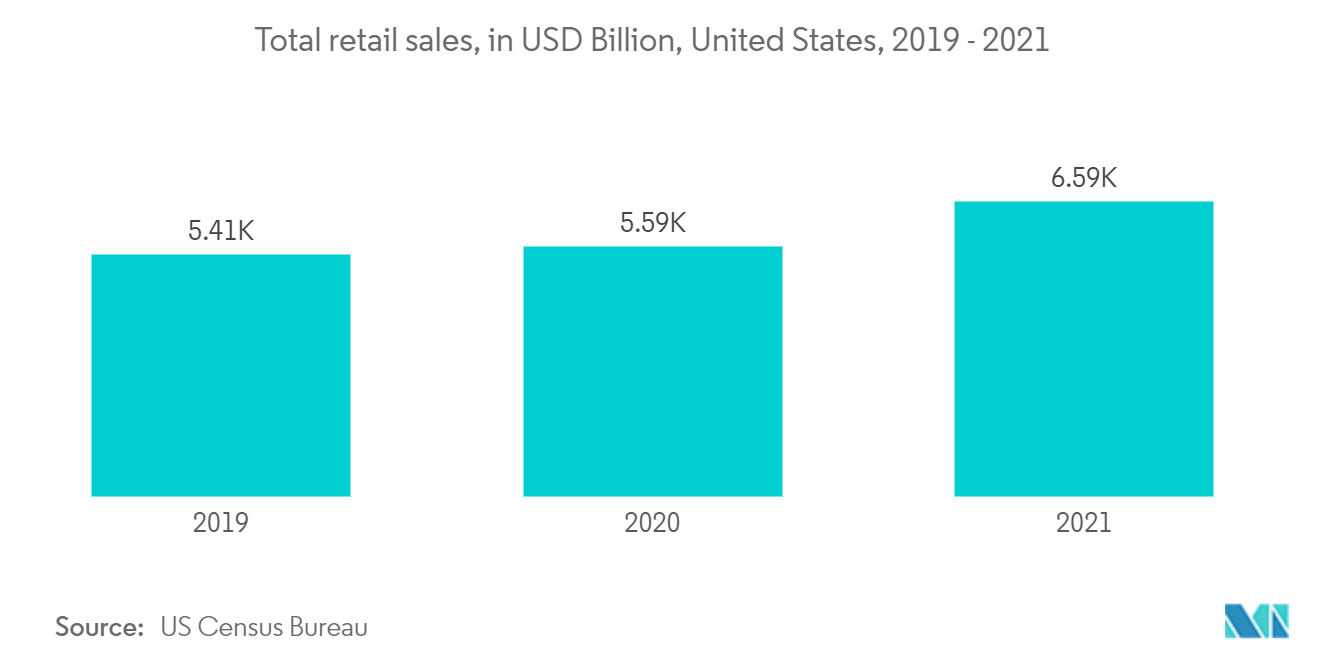
North America Expected to Dominate the Market
- North America is a considerably developed market, owing to the presence of several startups working toward easing the continuous integration capabilities of institutions. Bulk data integration techniques and tools are currently most efficiently implemented in critical end-users such as BFSI or government initiatives to identify data synchronization patterns.
- The general trend has been favourable toward the adoption of CI infrastructure to advance DevOps and streamline processes. A special consideration for early adopters has been that if a task is driven by public infrastructure, the code must consequently be publicly available and deployed periodically throughout the development and deployment process, ensuring access to the code for quality assurance and security audits by the public and other relevant third parties and allowing for rapid development and fixing processes.
- Generally, APIs are foundational for a modern digital ecosystem. The region's teams aim to adopt continuous integration practices buttressed by automation tools and integrated security testing capabilities, significantly boosting DevOps adoption. Local vendors have also been slowly maximizing capabilities by applying APIs to their CI offerings. Moreover, partnerships are engaging significant vendors in the market who are well-placed for further customer acquisition.
- In February last year, CircleCI, a CI/CD pipeline provider based in the USA, announced a collaboration with AWS GovCloud to assist in the augmentation of application development workflows for United States government platforms utilizing AWS's government platform to modernize their application development workflows. The partnership involves collaborating with an independent federal agency, such as the Small Business Administration (SBA), or systems integrators, such as AWS.
Moreover, the company's growth has been well placed with the announcement of a Series F funding round, raising USD 100 million and bringing the company's valuation to USD 1.7 billion. This was in lieu of their recently planned acquisition of Vamp, a Dutch release orchestration platform, allowing the company to maximize the potential of their offering.
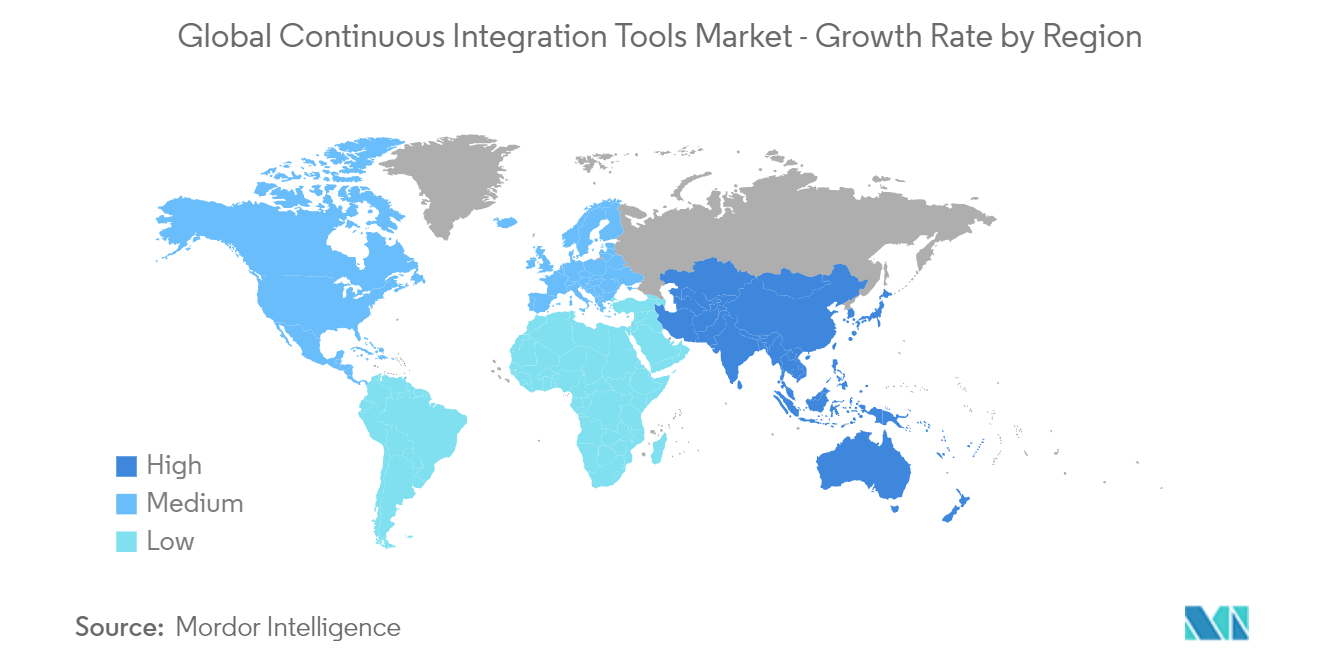
Continuous Integration Solutions Industry Overview
Because of the emergence of new market players and the expansion of existing market players, the competitive landscape of the Continuous Integration Tools Market is expected to fragment over the forecast period. Small and medium-sized solution providers are increasingly raising capital and attempting to enter the market smoothly.
In November 2022, Arista Networks announced a comprehensive network automation solution with the Arista Continuous Integration (CI) Pipeline. The Arista CI Pipeline, based on Arista's EOS Network Data Lake (NetDL), aids enterprise customers in implementing a contemporary network operating paradigm. With less operational time and money, this strategy gives the network a flexible, data-driven process for managing changes that makes deployment faster and more reliable.
Continuous Integration Solutions Market Leaders
-
Atlassian Corporation PLC
-
Amazon Web Services, Inc.
-
Microsoft Corporation
-
Circle Internet Services, Inc.
-
GitLab, Inc.
*Disclaimer: Major Players sorted in no particular order
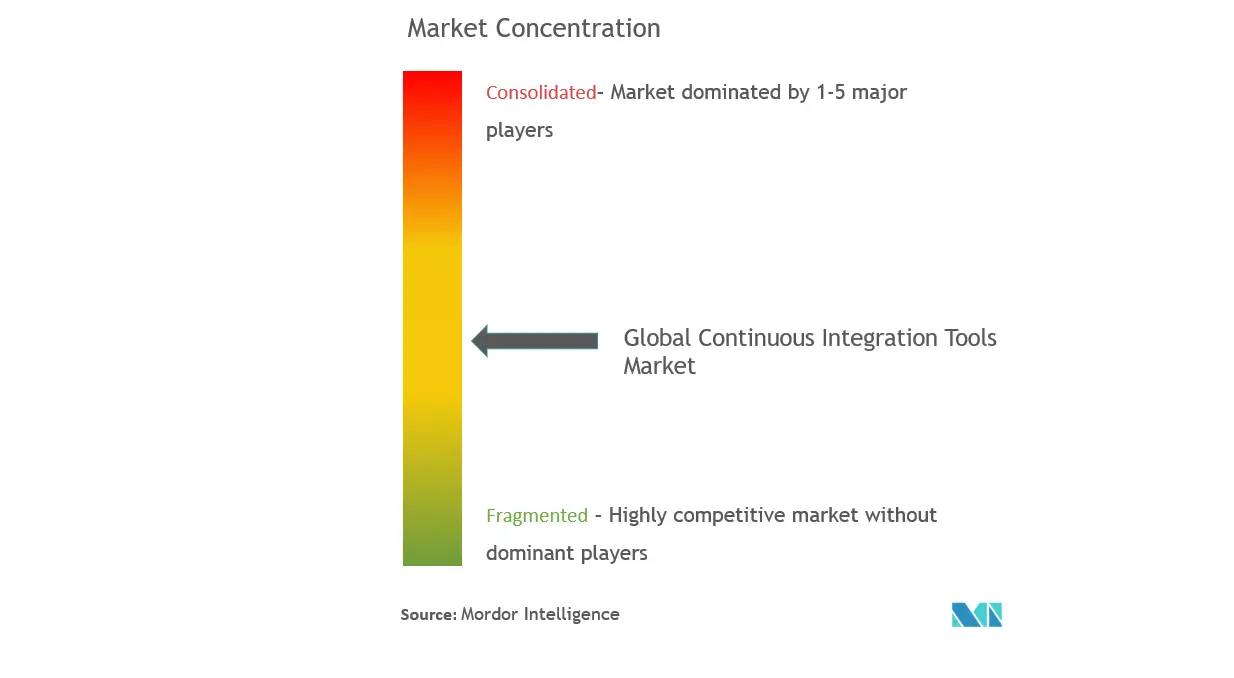
Continuous Integration Solutions Market News
- July 2022: The top continuous integration and continuous delivery (CI/CD) platform, CircleCI, declared support for GitLab SaaS users to be generally available. Joint customers can now utilize the interoperability between CircleCI, The One DevOps Platform for Software Innovation, and GitLab Inc. technologies. GitLab-based software development teams now have access to CircleCI's industry-leading speed, intelligent test splitting, and the broadest selection of resource classes and compute options.
- December 2022: Amazon announced the Amazon Code Academy. With Amazon CodeCatalyst, a service that unifies software development and delivery, software development teams may more easily and quickly design, create, collaborate on, build, and deploy applications on AWS, resulting in less friction across the development lifecycle. The platform can enable issue management, enabling the tracing of changes across commits, pull requests, and deployments. Automated build and release (CI/CD) pipelines using flexible, managed build infrastructure Dashboards that display a feed of project activities like commits, pull requests, and test reporting.
Continuous Integration Solutions Market Report - Table of Contents
1. INTRODUCTION
- 1.1 Study Assumptions and Market Definition
- 1.2 Scope of the Study
2. RESEARCH METHODOLOGY
3. EXECUTIVE SUMMARY
4. MARKET INSIGHTS
- 4.1 Market Overview
-
4.2 Industry Attractiveness - Porter's Five Forces Analysis
- 4.2.1 Bargaining Power of Suppliers
- 4.2.2 Bargaining Power of Consumers
- 4.2.3 Threat of New Entrants
- 4.2.4 Threat of Substitutes
- 4.2.5 Intensity of Competitive Rivalry
- 4.3 Assessment of the Impact of COVID-19 on the Market
5. MARKET DYNAMICS
-
5.1 Market Drivers
- 5.1.1 Increasing Adoption of Software-based Business Processes
- 5.1.2 Increasing Demand for Reduced Complexities in Software Development and Cost Optimization
-
5.2 Market Challenges
- 5.2.1 Lack of Expertise in Deployment of CI Tools Especially in the Small and Medium Enterprises
6. MARKET SEGMENTATION
-
6.1 Deployment
- 6.1.1 On-premise
- 6.1.2 Cloud
-
6.2 End-User Industry
- 6.2.1 IT and Telecom
- 6.2.2 Retail and E-commerce
- 6.2.3 Healthcare and Life Sciences
- 6.2.4 BFSI
- 6.2.5 Media and Entertainment
- 6.2.6 Other End-User Industries (Education, Manufacturing)
-
6.3 Geography
- 6.3.1 North America
- 6.3.2 Europe
- 6.3.3 Asia Pacific
- 6.3.4 Latin America
- 6.3.5 Middle East and Africa
7. COMPETITIVE LANDSCAPE
-
7.1 Company Profiles
- 7.1.1 Atlassian Corporation PLC
- 7.1.2 Amazon Web Services Inc.
- 7.1.3 Microsoft Corporation
- 7.1.4 Circle Internet Services Inc.
- 7.1.5 GitLab Inc.
- 7.1.6 Buddy (BDY Sp zoo Sp K)
- 7.1.7 Micro Focus International PLC
- 7.1.8 JetBrains SRO
- 7.1.9 CodeShip Inc.
- 7.1.10 Thoughtworks Inc.
- 7.1.11 IBM Corporation
- 7.1.12 Travis CI GmbH
- *List Not Exhaustive
8. INVESTMENT ANALYSIS
9. FUTURE OF THE MARKET
** Subject To AvailablityContinuous Integration Solutions Industry Segmentation
Continuous Integration Tools (CI Tools) are an essential component of DevOps and are used to integrate various DevOps stages. It includes an automated testing process, which enables multiple developers to contribute to and collaborate on a shared codebase at a rapid pace. Continuous Integration (CI) tools further help the development team make changes to version control, where software developers share and merge their changes at the time of completion of every project task.
The Continuous Integration Tools Market is segmented by Deployment Mode (On-Premise, On-Cloud), End-User Industry (IT & Telecom, Retail & Ecommerce, Healthcare & Lifesciences, BFSI, Media & Entertainment, Others), and Geography (North America, Europe, Asia Pacific, Latin America, and the Middle East & Africa).
The market sizes and forecasts are provided in terms of value (USD million) for all the above segments.
| Deployment | On-premise |
| Cloud | |
| End-User Industry | IT and Telecom |
| Retail and E-commerce | |
| Healthcare and Life Sciences | |
| BFSI | |
| Media and Entertainment | |
| Other End-User Industries (Education, Manufacturing) | |
| Geography | North America |
| Europe | |
| Asia Pacific | |
| Latin America | |
| Middle East and Africa |
Continuous Integration Solutions Market Research FAQs
How big is the Continuous Integration Tools Market?
The Continuous Integration Tools Market size is expected to reach USD 1.43 billion in 2024 and grow at a CAGR of 21.18% to reach USD 3.72 billion by 2029.
What is the current Continuous Integration Tools Market size?
In 2024, the Continuous Integration Tools Market size is expected to reach USD 1.43 billion.
Who are the key players in Continuous Integration Tools Market?
Atlassian Corporation PLC , Amazon Web Services, Inc., Microsoft Corporation, Circle Internet Services, Inc. and GitLab, Inc. are the major companies operating in the Continuous Integration Tools Market.
Which is the fastest growing region in Continuous Integration Tools Market?
Asia Pacific is estimated to grow at the highest CAGR over the forecast period (2024-2029).
Which region has the biggest share in Continuous Integration Tools Market?
In 2024, the North America accounts for the largest market share in Continuous Integration Tools Market.
What years does this Continuous Integration Tools Market cover, and what was the market size in 2023?
In 2023, the Continuous Integration Tools Market size was estimated at USD 1.18 billion. The report covers the Continuous Integration Tools Market historical market size for years: 2021, 2022 and 2023. The report also forecasts the Continuous Integration Tools Market size for years: 2024, 2025, 2026, 2027, 2028 and 2029.
Continuous Integration Platform Industry Report
Statistics for the 2023 Continuous Integration Platform market share, size and revenue growth rate, created by Mordor Intelligence™ Industry Reports. Continuous Integration Platform analysis includes a market forecast outlook to 2029 and historical overview. Get a sample of this industry analysis as a free report PDF download.



